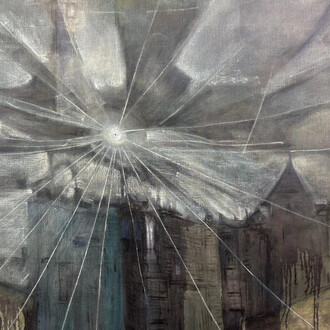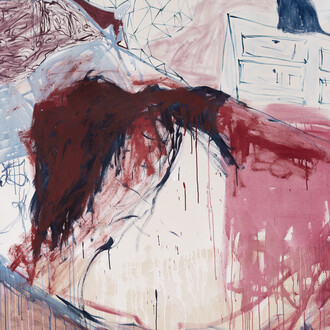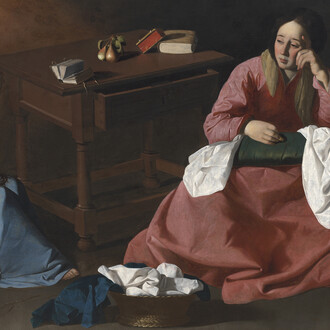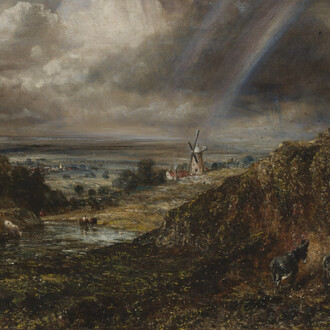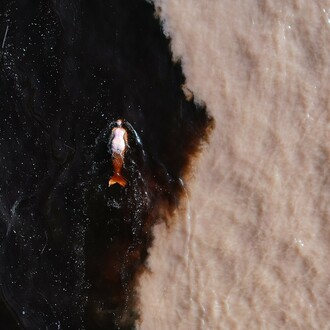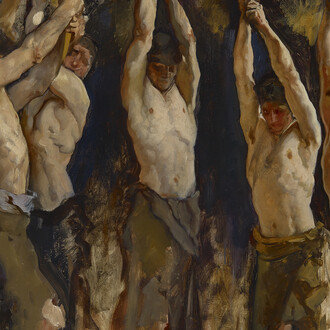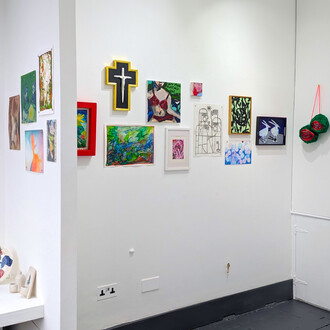Retracing one’s steps through the corridors of memory, searching for particular moments or times, is rarely a simple task. More often, it proves impossible to do so by will alone; instead, we must wait for ‘madeleine moments,’ when the sensorial textures of daily life unearth what has long been concealed. It is within forgotten yet familiar scents, tastes, sounds, and places that such moments rise again.
These familiarities most readily gather around the notion of ‘home’ - that place which exists in memory as both Heimlich and Unheimlich. This exhibition lingers on the layered and elusive idea of ‘home’ as a vessel for these moments. Drawing from dual heritage, personal narrative, and collective history, the works on display weave a poetic and hopeful tapestry of ‘homes’: native, adopted, and remembered.
In the works of Mohammed Adel (b. 1997), the eye slowly adjusts to a darkness that draws it inward. Like moving through a childhood house at night, guided only by the faintest glimmers, Adel’s canvases sharpen our vision. What once seemed hidden or strange emerges through sustained looking. These are meditations on the memory of ‘home,’ often fragments drawn from Adel’s own home in East London.
Other works, such as those of Diana Cepleanu (b. 1957, Bucharest, Romania), turn toward the intimate meditation of domestic memory. Toys, furniture, and ornaments appear in her paintings, opening windows onto the way ‘home’ imprints itself in memory, through objects and their associations, as they drift into the archive of lived time. Her objects remain recognizable, yet they seem to dissolve, slowly, into the realm of the lost. As Marcel Proust once asked of his own ‘madeleine moment,’ how might such memories be traced within the confines of their own creator?
This same question lingers within the richly textured works of Sebastian Espejo (b. 1990, Santiago, Chile). His practice gathers the beauty of the everyday, capturing its fleeting singularities in sensory form. Here, both object and place guide us toward the familiarity of ‘home’ that can be found in stillness. Yet a rupture in this flow of time emerges in the work of Teodora Nitsolova (b. Bulgaria). Grappling with these apocalyptic days, her layered surfaces build a mystical yet haunting language for the uncanny present; a time when the ‘home’ of cohesive community feels ever more distant. Time is no longer present becomes a triptych for our age, echoing medieval reliquaries dedicated to what is lost but decidedly not forgotten.
Madeleine moments illuminates the varied paths by which ‘home,’ in all its shifting definitions, may be summoned. In Ted Gahl’s (b. 1983, New Haven, Connecticut) practice, memory is reignited through the act of looking inward, searing once-fading impressions back into place. In Mia Kokkoni’s (b. 1993, Greece) Blue man, nostalgia appears unrooted and transient. Her Scottish landscapes, cool and distant, are tempered with the warmth of Cypriot trees, a call back to her Mediterranean roots.
The ‘home,’ then, is not lost to time. Its memories may lie dormant, locked beyond the conscious mind, yet their keys are scattered throughout lived experience. Through the sensibilities of existence itself, these long-buried times may awaken once more.
(Text by Isabella Pensa)





